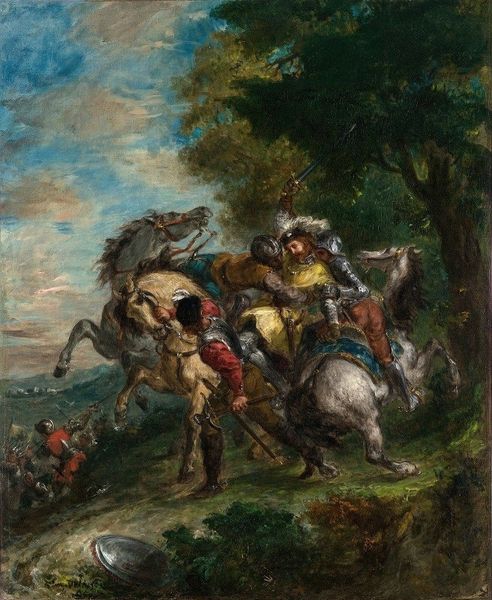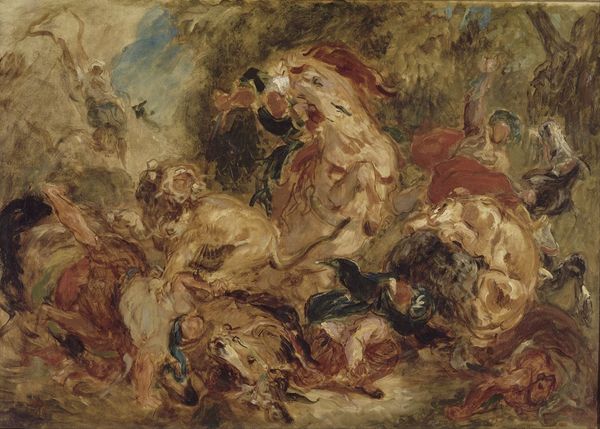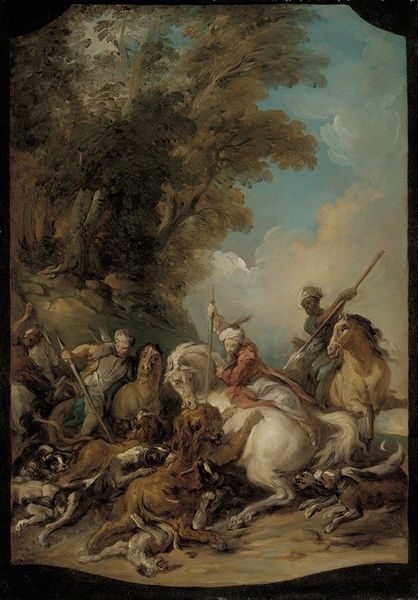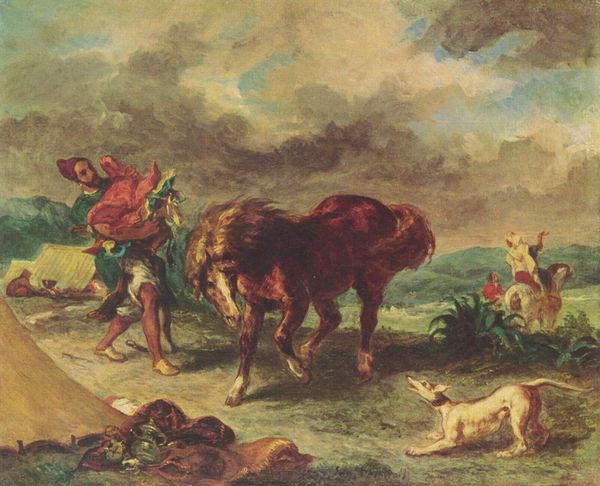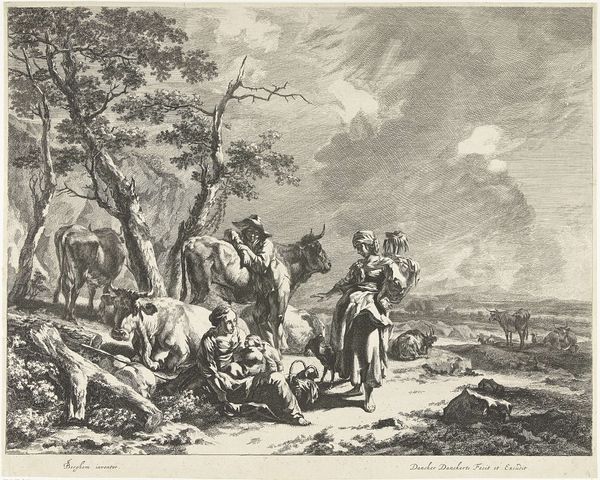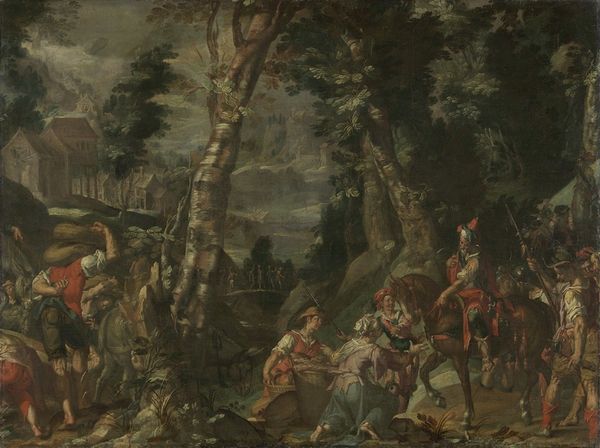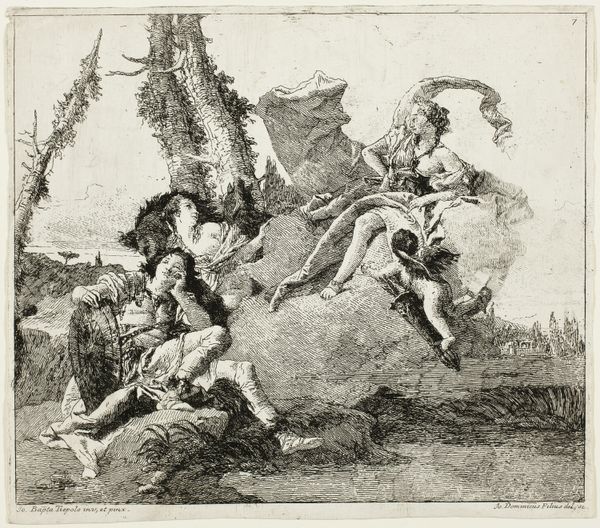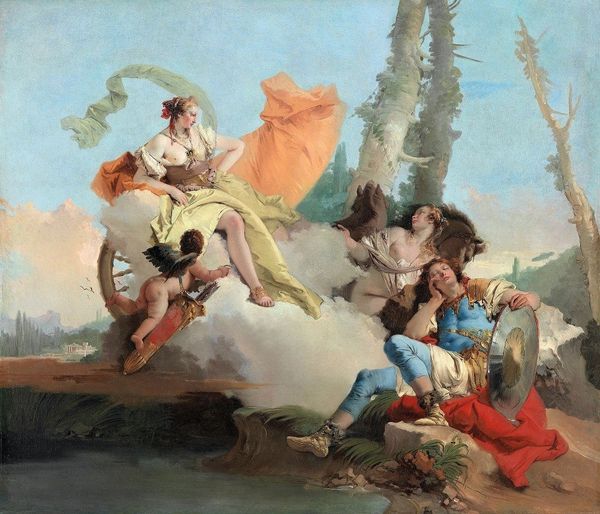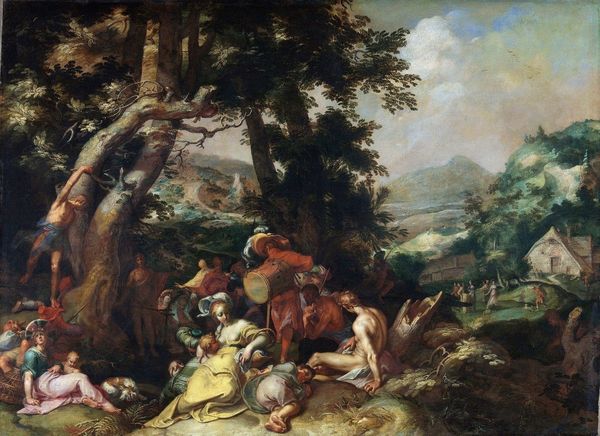
Dimensions: 62 x 50 cm
Copyright: Public domain
Eugène Delacroix painted the Death of Lara on canvas sometime in the first half of the 19th century. We see a dramatic scene of loss and despair, capturing a specific cultural mood. Delacroix was active in France at a time of considerable political and cultural change. After the revolution, French artists were very concerned with the public role of art. Delacroix was a leading figure in the Romantic movement, which rejected the Enlightenment’s emphasis on reason. Instead, Romantics insisted on the importance of individual experience and emotion. They looked back to medieval folklore and non-Western cultures for inspiration. The Death of Lara reflects these interests. It seems likely that Delacroix drew his subject from Lord Byron’s narrative poem “Lara, A Tale,” published in 1814. Lord Byron was a key figure in Romanticism, celebrated for his dramatic, emotional poetry and his rebellious spirit. The painting invites us to consider how artistic and literary Romanticism found a voice in Byron and Delacroix. To understand Delacroix’s painting better, research into Romanticism and Byron’s poetry would be very useful.
Comments
No comments
Be the first to comment and join the conversation on the ultimate creative platform.
